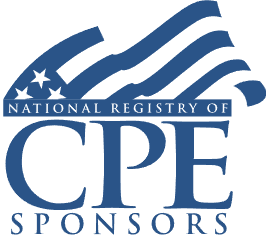Strategic Trusts, IRC Sec. 831b Captives, ESOPs: Saving Income, Estate and GST Tax

Course Details
- smart_display Format
On-Demand
- signal_cellular_alt Difficulty Level
Intermediate
- work Practice Area
Tax and Accounting
- event Date
Wednesday, January 8, 2020
- schedule Time
1:00 p.m. ET./10:00 a.m. PT
- timer Program Length
110 minutes
-
BARBRI is a NASBA CPE sponsor and this 110-minute webinar is accredited for 2.0 CPE credits.
-
BARBRI is an IRS-approved continuing education provider offering certified courses for Enrolled Agents (EA) and Tax Return Preparers (RTRP).
This course will explore often overlooked opportunities to implement now to help clients mitigate income and transfer taxes in 2020 and future years. Our speaker will discuss using strategic trusts, IRC Sec. 831b Captives, Employee Stock Ownership Plans (ESOPs), and other tax-saving techniques in light of economic trends and the pending sunset of the temporary estate exemption.
Faculty

Mr. Weiner is certified by the Texas Board of Legal Specialization in (1) Tax Law and (2) Estate Planning and Probate Law. He helps clients in many states with Federal Tax Planning to save Income, Estate, Gift, and GST taxes; Resolution of IRS tax matters in and out of court; Business and Entity Planning, Formation, and Maintenance; Sale and Purchase of Businesses; Pre- and Post-Nuptial Agreements, Captive Insurance Companies; ESOPs; Exit and Succession Planning; and Non-Tax Estate Planning to reduce costs and complexity. He is a past president of the American Academy of Attorneys and Certified Public Accountants. He is licensed to practice Law in most states, where ninety four percent of Americans live. Mr. Weiner is President of the charitable Lewis and Joan Lowenstein Foundation, and a member of its Board of Directors.
Description
Many clients use a special trust strategy that allows them to lower income, estate, gift, and GST taxes while also allowing the client to operate as both trustee and beneficiary to access, use and distribute trust assets for the client’s health, education maintenance, and support (“HEMS), a tax safe harbor.
The new expansive interpretation of IRC Sec. 2036(a)(2), by all Tax Court judges, first published in the Powell case, has raised significant new risks of unexpected estate tax for clients with family entities such as LLCs and partnerships. This trust can help clients avoid that risk if they act early enough.
IRS said on multiple occasions that micro captive insurance companies (that allow substantial tax savings provided by Congress) are legal but warned that some promoters have sold defective captives. Almost every public company has at least one captive to reduce insurance costs. Knowing the difference between micros that do and do not comply with Sec. 831b is important when a client asks you about a captive.
Establishing an ESOP can help business owners sell their business for a higher price and with better and safer terms benefitting both the employees and the owner. Many owners may defer or avoid capital gains tax while allowing employees to share in the financial success of the company. Knowing when to use a C corporation and when to use an S corporation with an ESOP is important to maximize tax savings.
Listen as our expert discusses valuable income and transfer tax strategies to reduce clients’ overall tax burden.
Outline
- Overview
- Trusts
- The Wealth Building and Preservation Trust
- Ways to structure and use trusts to save income tax
- A special trust to mitigate risks of IRC Sec. 2036(a)(2)
- Micro captive insurance companies
- ESOPs
- Additional tax-saving techniques
Benefits
The panel will review these and other critical issues:
- Utilizing captive insurance companies to lower taxes
- Establishing an ESOP to sell a business and avoid capital gains
- Using special trusts for tax savings
- Mitigating likelihood of inclusion under 2036(a)(2)
NASBA Details
Learning Objectives
After completing this course, you will be able to:
- Identify controversial micro captive insurance company practices
- Determine when a charitable remainder trust would be beneficial
- Decide when a HEMS trust would benefit a taxpayer
- Ascertain when an ESOP would benefit a small business owner

Strafford Publications, Inc. is registered with the National Association of State Boards of Accountancy (NASBA) as a sponsor of continuing professional education on the National Registry of CPE Sponsors. State boards of Accountancy have final authority on the acceptance of individual courses for CPE Credits. Complaints regarding registered sponsons may be submitted to NASBA through its website: www.nasbaregistry.org.

Strafford is an IRS-approved continuing education provider offering certified courses for Enrolled Agents (EA) and Tax Return Preparers (RTRP).
Related Courses

Final Section 2801 Regs: Covered Gifts and Bequests From Covered Expatriates
Saturday, March 22, 2025
1:00 p.m. ET./10:00 a.m. PT
Recommended Resources
How CPE Can Bridge the Gap Between What You Know and What You Need to Know
- Career Advancement